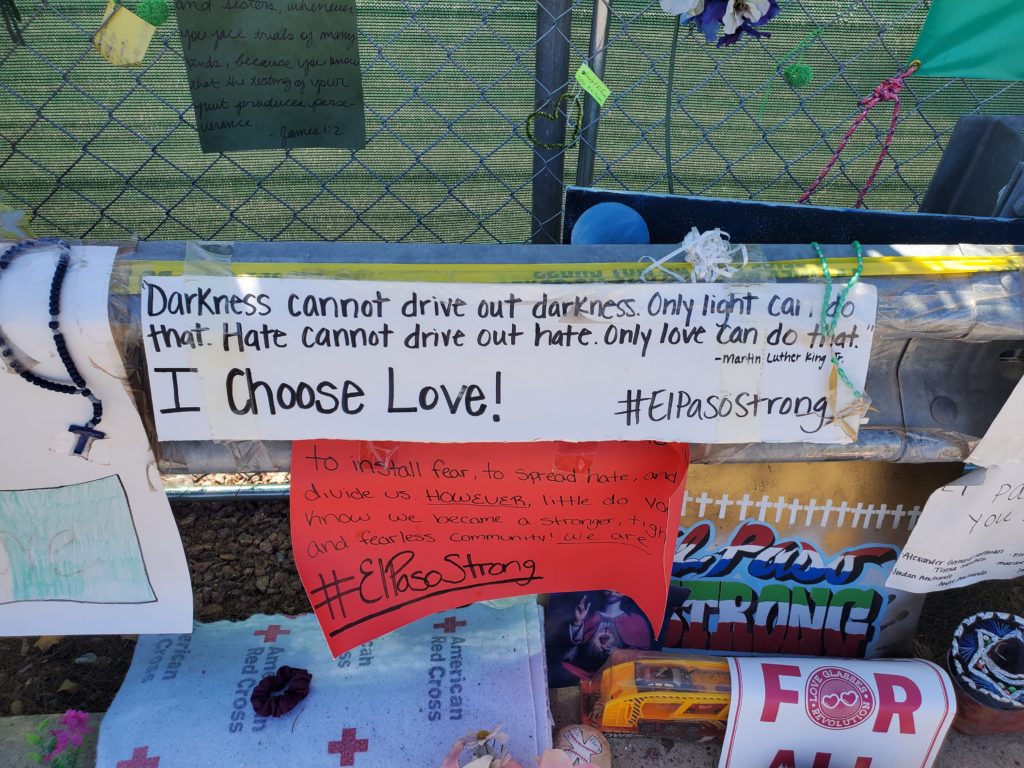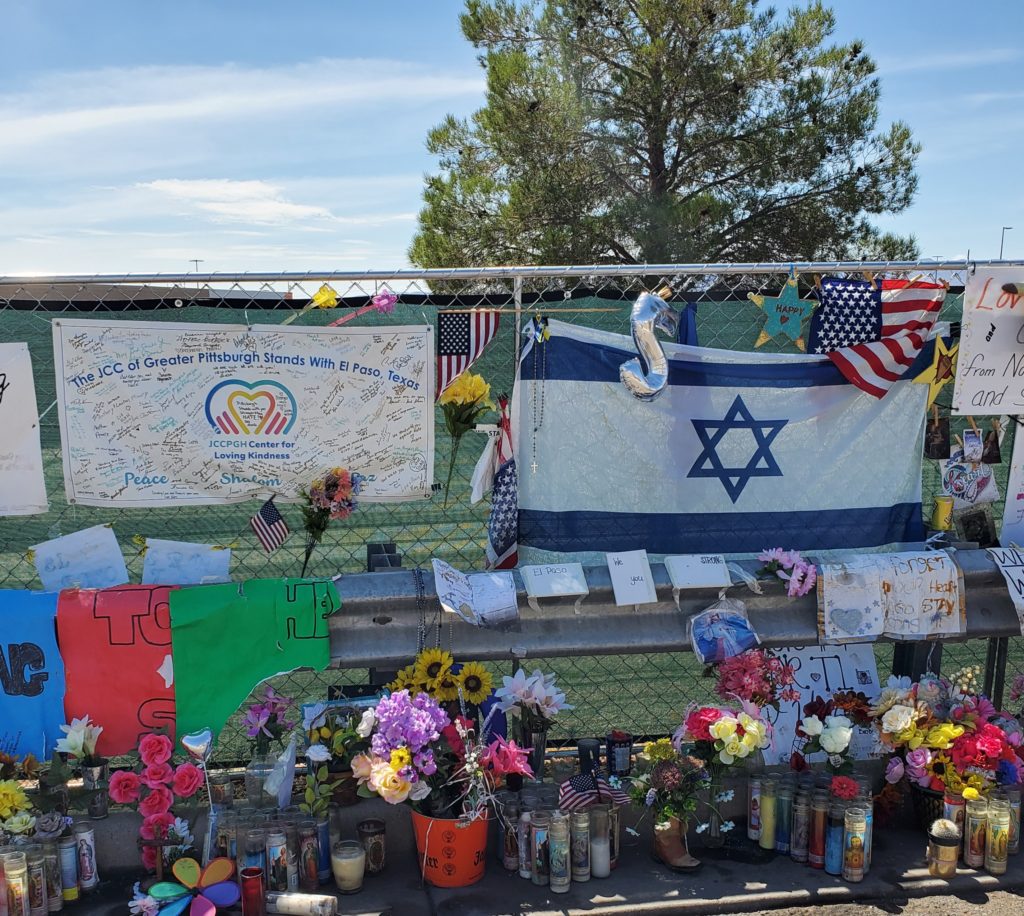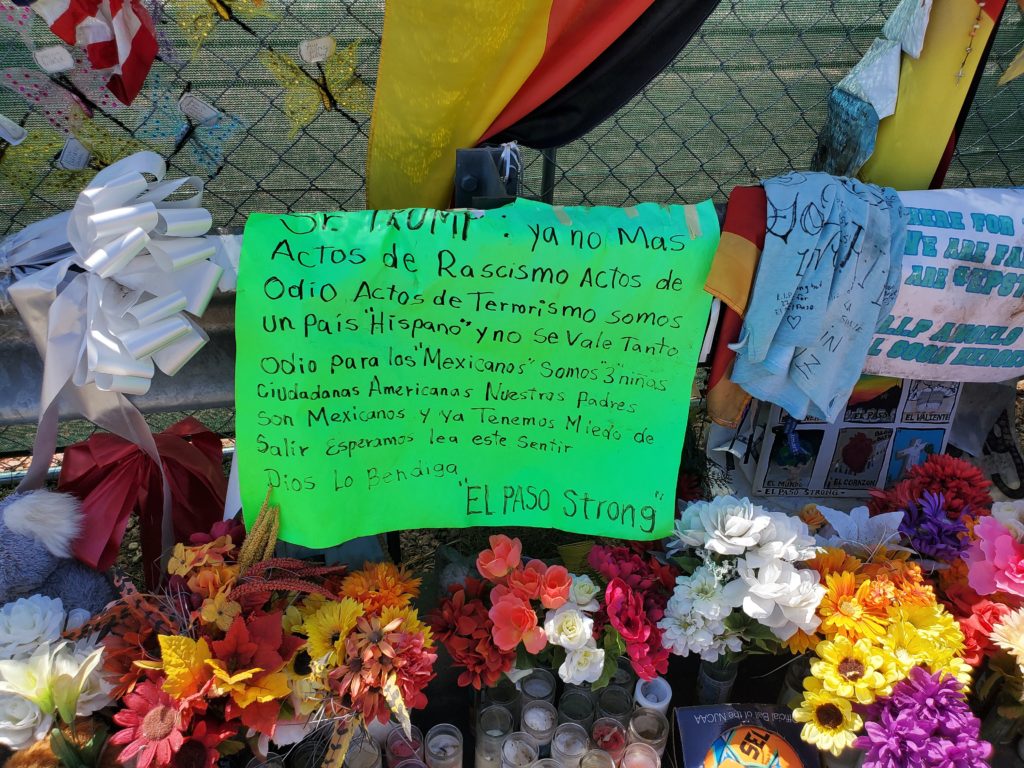
On Saturday, August 3, 2019, in El Paso, Texas, a 21 year old white male brandishing a semi-automatic rifle walked into a Walmart known to be popular with Americans and a convenient destination for Mexicans crossing the nearby border for their weekly shopping excursion into the United States. He began to shoot, deliberately targeting people of apparent Mexican and Latin American descent. Twenty three people died in the shooting (the last dying in April of 2020), and another twenty three were injured. News organizations identified the dead as thirteen United States Americans, eight Mexicans, and one German citizen. A deeper look, though, reveals that of the thirteen Americans killed, eleven were of Latinx descent. As a result, the El Paso Walmart shooting was the worst mass murder of Latino people in modern American history.
The murderer has been identified as a white supremacist with a deep hatred of Latinos, someone who consumed white supremacist literature and wrote a manifesto at the time of the shooting. This is not a surprise, as in the last five years the United States also has suffered mass shootings of African Americans (Charleston, June 17, 2015) and Jews (October 27, 2018). In his manifesto, the shooter argued that Mexicans specifically, and Latinxs generally, are invading the United States, taking jobs away from U.S. citizens, and endangering the white majority populace. This rhetoric reveals anti-Latinx sentiments with roots deep in United States history. It also calls attention to the historical and continuous race-based and structural violence that affects minority communities in the U.S. and at the border.
Father McShane has suggested that the Fordham community commemorate and discuss these tragedies in November. For now, though, it is important to mourn the victims of August 3 and to remember how and why they died:
Andre Anchondo, 23
Jordan Anchondo, 24
Arturo Benavides, 60
Leonard Cipeda Campos, 41
Angelina Englisbee, 86
Maria Flores, 77
Raul Flores, 77
Guillermo Garcia, 36
Jorge Calvillo García, 61
Maribel Hernandez, 56
Adolfo Cerros Hernandez, 68
Alexander Gerhard Hoffman, 66
David Alvah Johnson, 63
Luis Alfonso Juarez, 90
Ivan Hilierto Manzano, 46
Gloria Irma Marquez
Elsa Mendoza Márquez, 57
Margie Reckard, 63
Sara Esther Regalado, 66
Javier Rodriguez, 15
María Eugenia Legarreta Rothe, 58
Teresa Sánchez de Freitas, 82
Juan Velázquez, 77
Father McShane asked the University Church to offer the Sunday (August 2) Mass on behalf of the victims and the El Paso community, an appropriate gesture for a community and a people very serious about their religious faith.
For our part, we mourn the dead and summon the living to reflect on what we can do to support our own communities. The El Paso Museum of History will display a digital memorial in remembrance of August 3. The public can join virtually by submitting pictures and memories on Digital El Paso at http://www.digie.org. We invite you to take part and encourage everyone to become active in supporting some of those organizations working on behalf of our communities in El Paso, the Southwest, and in New York. We can best honor the dead by fighting for and supporting justice at home and around the nation:
Local
Central American Legal Assistance: https://www.centralamericanlegal.info/
Latino Pride Center: http://www.latinopridecenter.org/
Casita Maria Center for Arts and Education https://www.casitamaria.org/
St. Jerome H.A.N.D.S Community Center: https://jeromehands.com/
Texas
In El Paso, Annunciation House, which has worked to house and support migrants and refugees on the border:: https://annunciationhouse.org/
Raices Texas: The Refugee and Immigrant Center for Education and Legal Services https://www.raicestexas.org/ways-to-give/donate/
Border Network for Human Rights: https://bnhr.org/about/history/
National
The Young Center for Immigrant Children’s Rights: https://www.theyoungcenter.org/
The National Day Laborer Organizing Network: https://ndlon.org/
United We Dream: https://unitedwedream.org/


In solidarity,
David Myers and Stephanie Huezo (with help from William Hogue)

